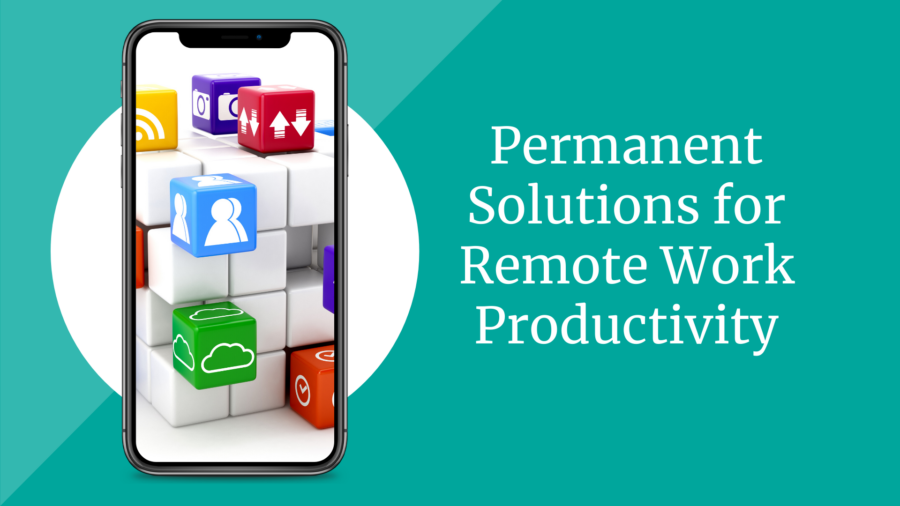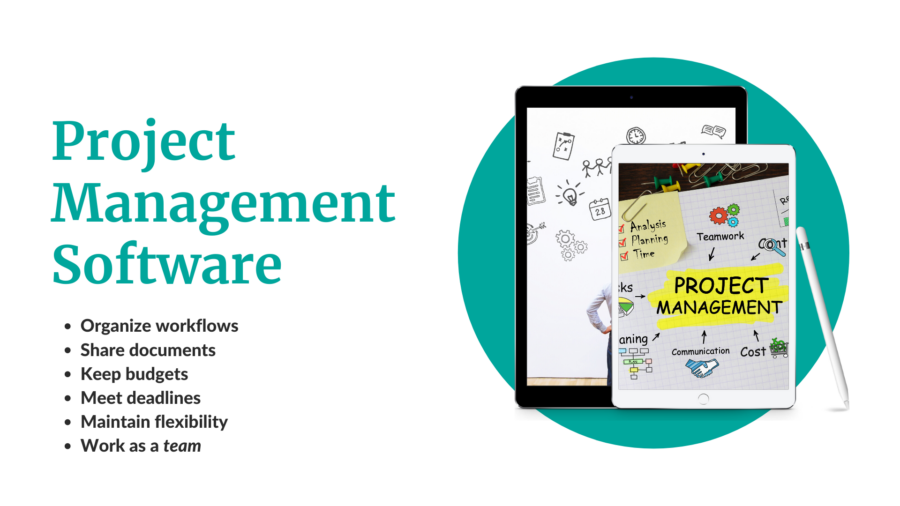
The world has changed a lot in 2020, and many businesses have realized that not only is it possible for their employees to work from home but that it may also be beneficial. Indeed, 75% of remote workers say they’re more productive when they get to work from home because of fewer distractions.
For some businesses, the transition of their workforce working from home permanently hasn’t been easy and the learning curve has been steep. But knowing what tools to use is a huge advantage, and there’s a tool for practically every element of your business.
In this article, we’re going to take a look at the types of tools that will help your employees work from home permanently in 2020 and beyond.
Why Do Your Employees Need Remote Working Software?
Remote working software helps your employees work remotely more effectively and productively. It can also make it possible for them to work from their home, from a cafe – even from the beach (if your company allows it).
There is a wide range of tools for you to choose from, such as video messaging applications, communication tools, cloud storage, and project management apps.
Remote working software is always more effective when it’s able to integrate with other tools. This makes it easier for your employees to switch from one tool to another without losing track of their work or data, and it enables a seamless collaboration where documents are saved, shared, and amended by your whole team.
Let’s take a look at some of these tools and how they can benefit your employees who will be working from home permanently.
1. Cloud Storage
Cloud storage apps are key for remote teamwork. Your team should be able to access them from all devices, and the best thing about them is that they don’t even need to be overly complex. All they require are WiFi and a shared folder that your whole team has access to. Then, when someone saves a file to the shared folder, the next person can come along and work on it.
Cloud storage updates instantly and automatically, too. Each time an employee makes a change, it’s saved and tracked.
The best cloud storage apps include iDrive, which comes complete with a physical hard drive for extra security, and Mega, a cloud storage tool that offers 50GB with its free plan.
2. Communication Tools
It’s a lot harder for your employees to stay in touch when they’re not sharing the same office space. But communication tools are a huge aid for remote workers. They make everyone’s life easier, ensuring your team stays on the same page and stays up-to-date with where the company is at.
A good communication tool should be one that your team can access from any device wherever they are. It should also centralize messages and tasks, and it’s always better if it comes with text and voice capabilities.
If you’re a bit of a tech expert, or if you have someone on your team who is tech-savvy, you could even transform a pre-build API into a custom tool of your own. APIs easily allow developers to create their own communication software or apps that can be accessed by remote employees.
3. Project Management Software
When you have projects that require managing your team’s tasks and coordinating responsibilities remotely, you’ll need to use project management software.
Top-notch project management software, such as Trello, helps your team streamline and organize workflows, share documents, work within budgets, as well as stay on top of deadlines and manage important details. Ultimately, they help remote workers keep track of tasks, eliminate back-and-forth emails, and move forward together as a team. When one team member has finished a particular task on a project, they can tick it off so that the next person can come along and make a start on their task.

Another benefit of project management software is that it can also help you rearrange deadlines and schedules in the event that one of your remote employees falls behind due to unforeseen circumstances. Also, with the added bonus of reports, you as the employer can monitor the work that’s carried out by your team. This means that, even though you’re not working side by side with your team in the office, you can still keep up with their progress.
There are a number of free project management apps that are available, but they’re usually limited in terms of how many projects you can manage, as well as how many remote employees you can add. It’s a much better idea to seek out a premium app and perhaps try the free trial before you buy.
4. Video Conferencing Apps
Just because your employees are now working remotely, that doesn’t mean you won’t be able to see them face-to-face. Instead of asking them to visit your office, you can use video conferencing apps to give your meetings a personal touch that would otherwise be missing.
Video conferencing tools aren’t perfect but they’re a good solution that makes you feel as though you’re in the same room as your team. They help to build morale, improve communication, and they can go a long way to ensuring nothing is lost in translation when you’re mapping out a new project.
There are dozens of video conferencing apps on the market right now. Zoom has proven to be a popular choice in recent months thanks to its ease of use – all you need to do is share a link with your team members and they will be able to join your call. It offers high-quality video and sound and has undoubtedly been built for team collaboration.
However, there are plenty of alternatives. For example, Google Hangouts is a free video-conferencing app that is easy to set up, comes with chat, and has a clean interface. Consider building your own video conferencing app that you can customize to your heart’s desire.
5. Presentations
Presentations still need to go ahead, despite your team working remotely. And while PowerPoint has been the go-to presentation software for many businesses down the years, there are lots of solid alternatives available.
Many employees have tried to use Zoom to present their projects to team members, but its interface isn’t the most user-friendly, which could make it awkward to use as a presentation tool. Instead, your options include Prezi, a cloud-based presentation app that brings to life presentations via a canvas that lets your employees rotate, frame, and zoom in on their presentations.
SlideShare is another popular presentation app that’s seen as a “social sharing” alternative to conventional slideshow tools like PowerPoint. Using SlideShare, your team can embed their presentation on blogs so that anyone who’s unable to attend the live presentation can watch it later.
Conclusion
The world has changed considerably in 2020, and if your employees will be working from home permanently from now on, it’s really important that you choose the right tools. And when it comes to ensuring your remote team works successfully, tools are your greatest weapon.
Use the tips in this article to pick the best ones for the right jobs, and consider testing a few out before making your final decision.
Business & Finance Articles on Business 2 Community
(67)
Report Post

